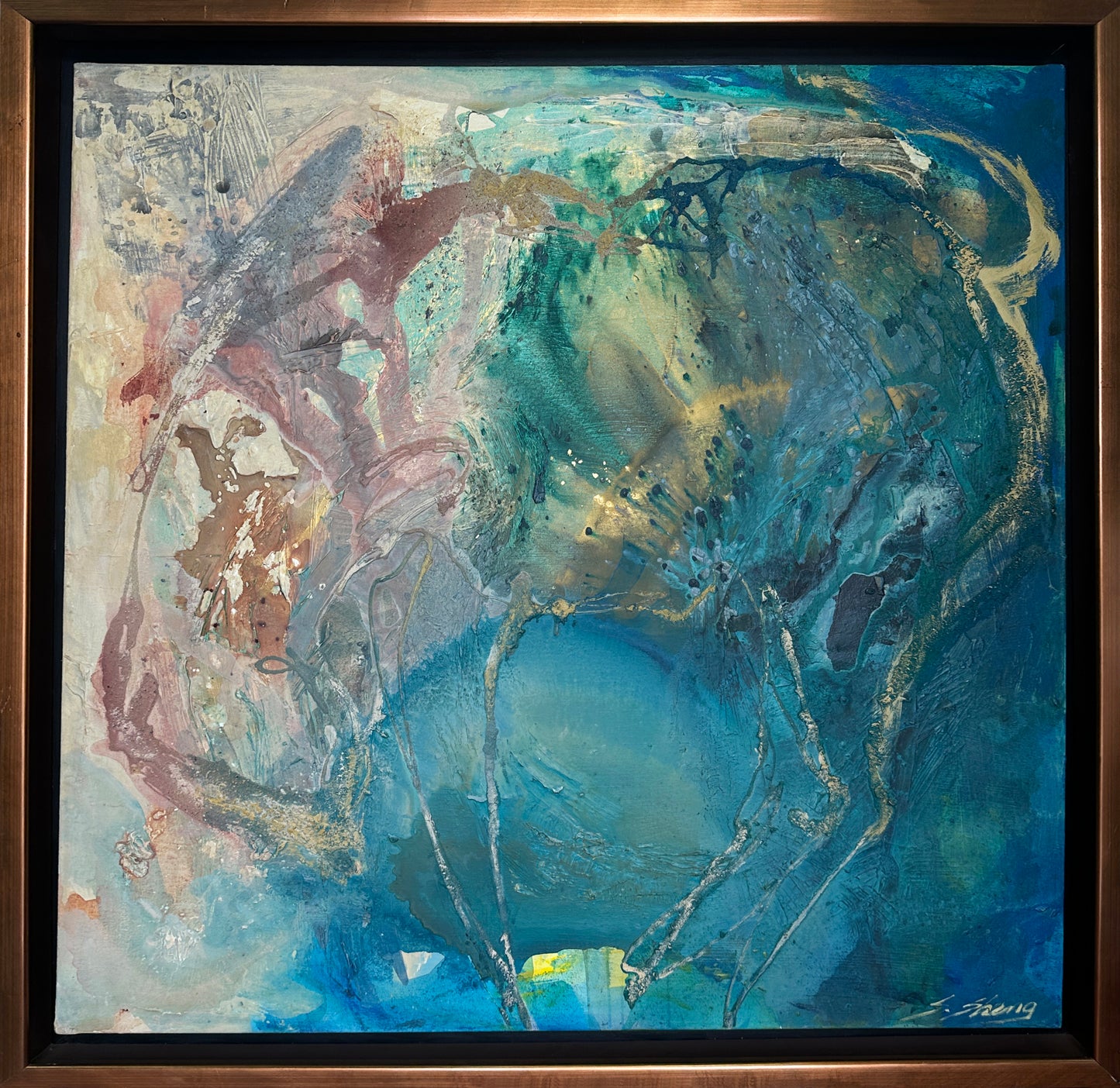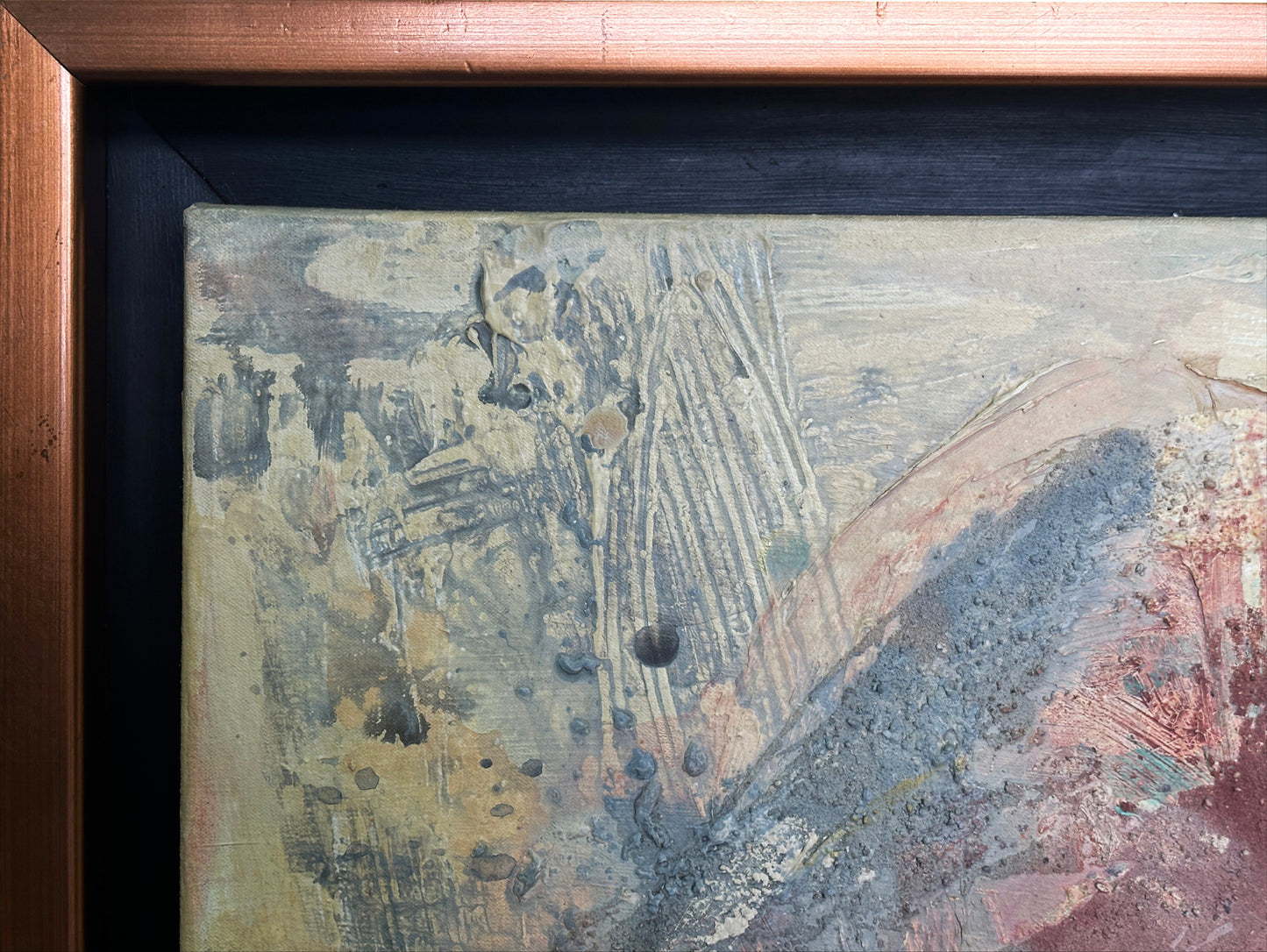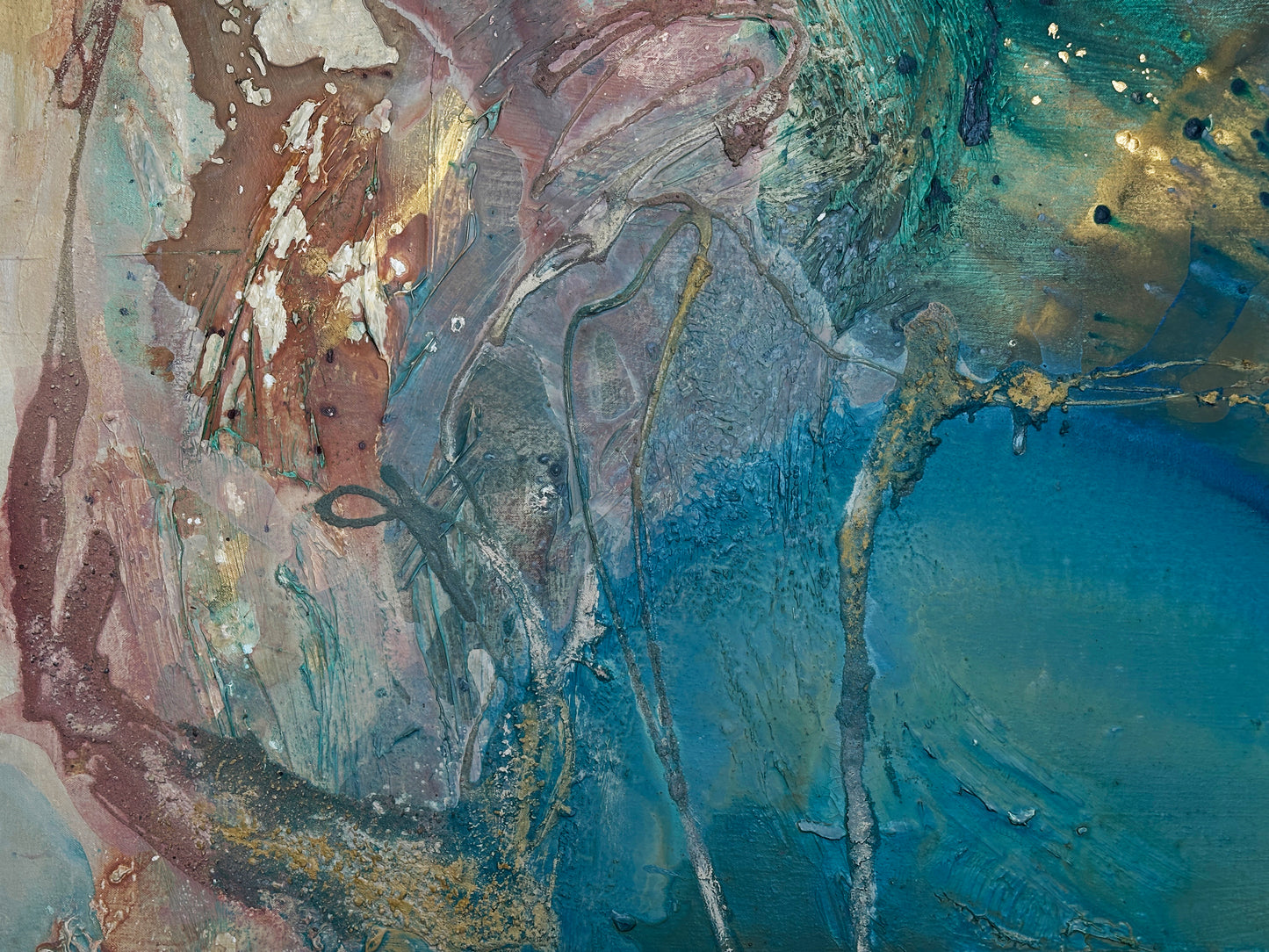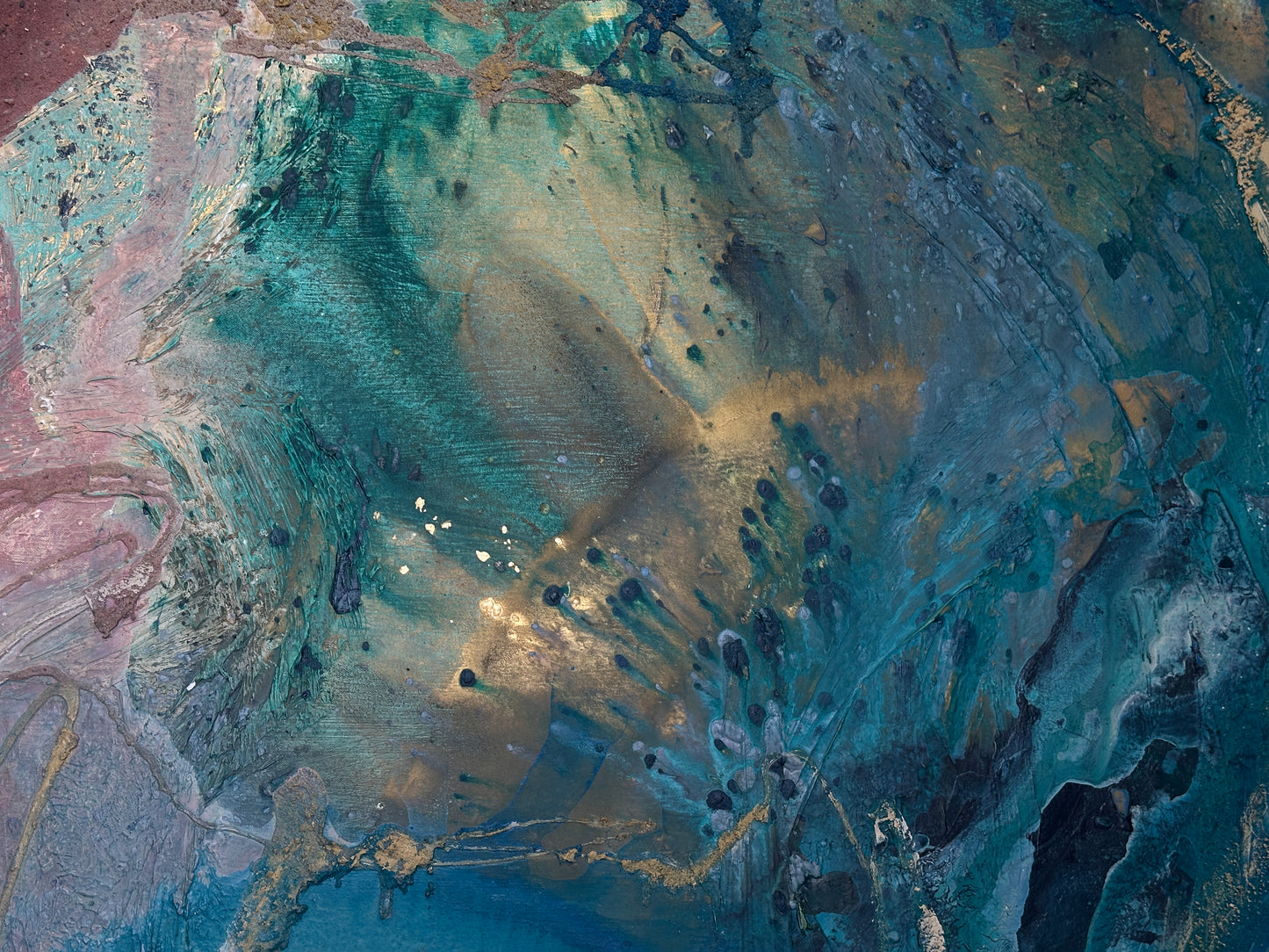bqt.art
Tang Sancai Horse
Tang Sancai Horse
Couldn't load pickup availability
Share
Artist: Sheng Shenshen 盛姍姍
Title: Tang Sancai Horse | 唐三彩馬
Materials: Oil on canvas
Size: 133 x 133 cm | 52 x 52 in (Framed)
Rarity: Unique
Medium: Painting
Signature: Hand-signed by artist
Condition: Excellent
Frame: Yes
The oil-on-canvas painting titled Tang Sancai Horse by Sheng Shenshen is a bold and abstract reimagining of a traditional subject—Tang Dynasty sancai (three-color glaze) horses, which are iconic symbols of Chinese ceramic art. This contemporary interpretation combines dynamic brushstrokes, vibrant colors, and layered textures to evoke the essence of the horse while embracing abstraction. Below is an in-depth analysis of this striking piece:
---
Subject and Narrative
The painting takes inspiration from the Tang Dynasty sancai horses, known for their elegant forms and tri-colored glazes. However, instead of a literal depiction, the artist abstracts the subject, reducing the horse to its essential forms and movements. The work captures the spirit, energy, and grace of the horse through fluid lines, layered textures, and a dynamic interplay of colors.
The abstract approach allows the viewer to experience the horse not just as a physical entity but as an embodiment of motion, vitality, and cultural significance. The painting feels like a tribute to the Tang Dynasty’s artistic legacy while also pushing the boundaries of modern representation.
---
Composition
The composition is fluid and dynamic, centered around the suggestion of the horse’s form. The curves and lines guide the viewer’s eye across the canvas, creating a sense of movement and rhythm. The implied contours of the horse, particularly the arched neck and flowing mane, are subtly integrated into the swirling patterns, inviting the viewer to interpret the shape and energy of the horse.
The balance of the composition is achieved through the placement of contrasting shapes and colors, with the denser textures and darker hues anchoring the lower right portion of the canvas while lighter, more ethereal strokes occupy the upper left. This balance creates both tension and harmony within the piece.
---
Color Palette
The painting’s color palette is rich and evocative, dominated by shades of blue and green with accents of gold, bronze, and earthy tones. These colors evoke the traditional sancai glazes—green, amber, and cream—while adding a contemporary twist with the vibrant blues. The blues and greens suggest a sense of depth and fluidity, reminiscent of water or air, which enhances the abstract and dreamlike quality of the piece.
The golden and earthy accents add warmth and richness, symbolizing the historical and cultural roots of the subject. The interplay of these colors creates a sense of vibrancy and energy, capturing both the elegance of the sancai horse and the dynamic nature of the painting.
---
Brushwork and Texture
The brushwork is expressive and layered, with a combination of bold, sweeping strokes and intricate, delicate details. The textures are richly varied, with thick impasto areas contrasting against smoother, more translucent layers. This layering creates depth and dimensionality, giving the painting a tactile, almost sculptural quality.
The use of texture also enhances the abstraction, as the viewer can sense the physicality of the paint and the energy of the artist’s process. The scraped, splattered, and blended areas suggest movement and spontaneity, mirroring the vitality and grace of a horse in motion.
---
Light and Atmosphere
The painting’s use of light is subtle and atmospheric, with shimmering gold accents and soft highlights that create a sense of luminosity. These glowing areas catch the eye and evoke the reflective qualities of sancai glazes. The darker shades provide contrast, lending the painting depth and grounding the composition.
The interplay of light and shadow within the abstract forms suggests dimensionality, as though the horse is emerging from or dissolving into the swirling background. This ethereal quality adds to the painting’s mystique and emotional resonance.
---
Emotion and Dynamism
The painting exudes energy and movement, capturing the spirit of the horse rather than its physical form. The fluid lines and dynamic brushstrokes convey a sense of freedom, strength, and vitality, qualities traditionally associated with horses. At the same time, the abstract nature of the work allows for a more personal and emotional interpretation, inviting the viewer to connect with the painting on a deeper, intuitive level.
The vibrant colors and rich textures contribute to the painting’s emotional impact, evoking feelings of excitement, wonder, and reverence for both the natural world and cultural heritage.
---
Symbolism and Themes
The Tang Sancai Horsehas long been a symbol of strength, beauty, and cultural refinement. By abstracting this subject, the painting bridges the gap between tradition and modernity, honoring the artistic achievements of the Tang Dynasty while reimagining them in a contemporary context. The swirling blues and greens may symbolize the timeless and universal qualities of the horse—its grace, power, and enduring significance.
The abstract style also emphasizes the idea of movement and transformation, suggesting themes of continuity, change, and the evolving nature of art and culture.
---
Overall Impression
Tang Sancai Horse is a masterful fusion of tradition and abstraction, capturing the essence of the sancai horse through bold colors, dynamic forms, and textured layers. The painting pays homage to a historical art form while pushing the boundaries of contemporary expression, creating a work that feels both timeless and innovative.
The piece is a testament to the artist’s ability to evoke emotion and meaning through abstraction, inviting viewers to experience the beauty and vitality of the horse in a new and imaginative way. It is a powerful and evocative celebration of cultural heritage, nature, and the dynamic possibilities of modern art.










